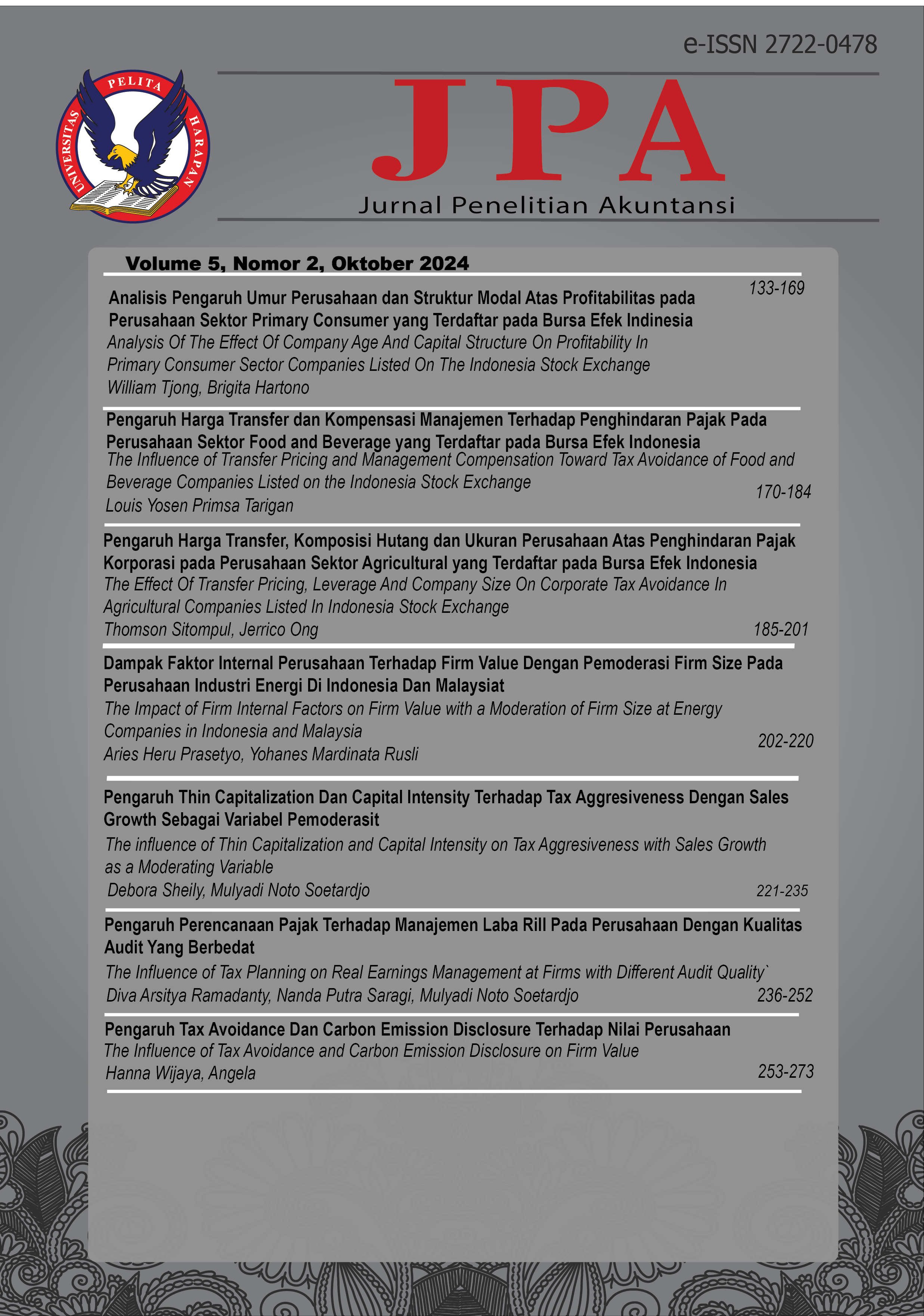THE EFFECT OF TRANSFER PRICING, LEVERAGE AND COMPANY SIZE ON CORPORATE TAX AVOIDANCE IN AGRICULTURAL COMPANIES LISTED IN INDONESIA STOCK EXCHANGE
Abstract
In Indonesia itself, the practice of tax avoidance has been widely practiced and Indonesia is one of the developing countries with the greatest losses caused by tax avoidance. Therefore, transfer pricing is used by companies to minimize the amount of tax paid through engineering prices transferred between divisions. In terms of leverage, Interest expenses are included in expenses that can be deducted from taxable income. This action is used by company managers to reduce the tax obligations borne by the company and is included in tax avoidance. A company with relatively large total assets indicates that the company has a large size so that it has great potential to gain maximum profits as well as its tax burden. The population used in this research is all 24 agricultural sector companies listed on the Indonesian Stock Exchange. The sampling technique used purposive sampling which is 63 samples in total. The results of the study indicate that Transfer Pricing has no significant impact in agricultural companies listed on the Indonesia Stock Exchange (IDX). Leverage has significant impact in agricultural companies listed on the Indonesia Stock Exchange (IDX). Company Size has a negative significant impact in agricultural companies listed on the Indonesia Stock Exchange (IDX). Transfer Pricing, Leverage, Company Size do not have simultaneous effect and significant impact on tax avoidance.
Downloads
Published
Issue
Section
License
Copyright (c) 2024 Thomson Sitompul, Jerrico Ong

This work is licensed under a Creative Commons Attribution-ShareAlike 4.0 International License.
Authors who publish with this journal agree to the following terms:
1) Authors retain copyright and grant the journal right of first publication with the work simultaneously licensed under a Creative Commons Attribution License (CC-BY-SA 4.0) that allows others to share the work with an acknowledgement of the work's authorship and initial publication in this journal.
2) Authors are able to enter into separate, additional contractual arrangements for the non-exclusive distribution of the journal's published version of the work (e.g., post it to an institutional repository or publish it in a book), with an acknowledgement of its initial publication in this journal.
3) Authors are permitted and encouraged to post their work online (e.g., in institutional repositories or on their website). The final published PDF should be used and bibliographic details that credit the publication in this journal should be included.


